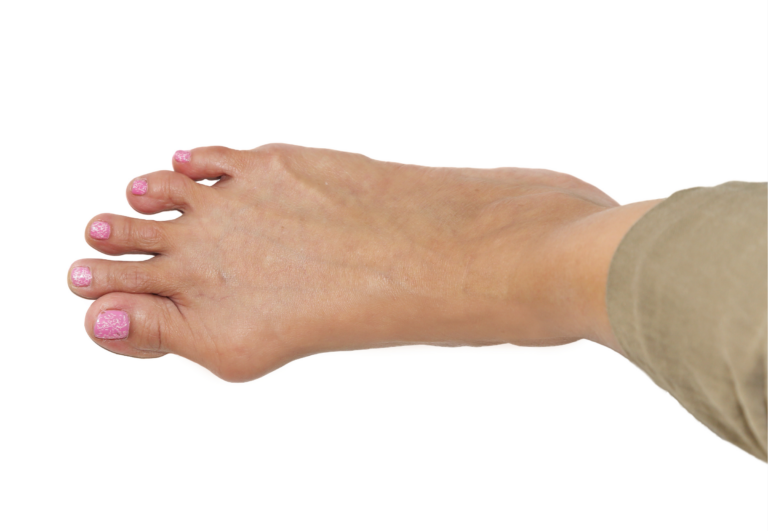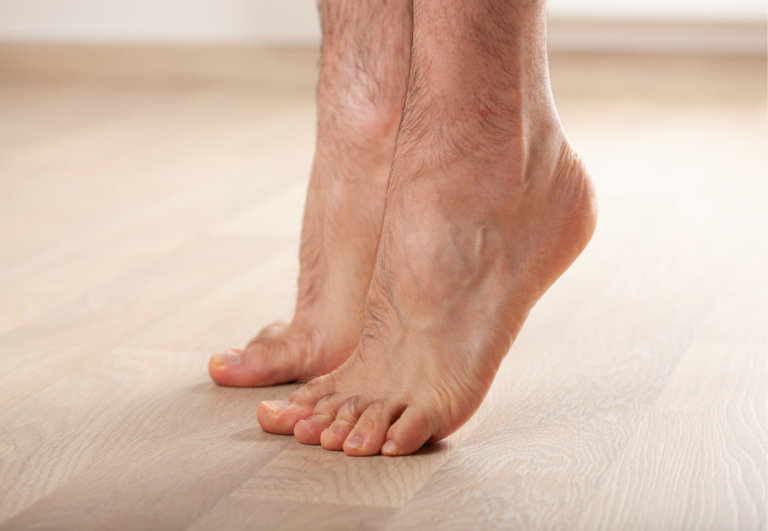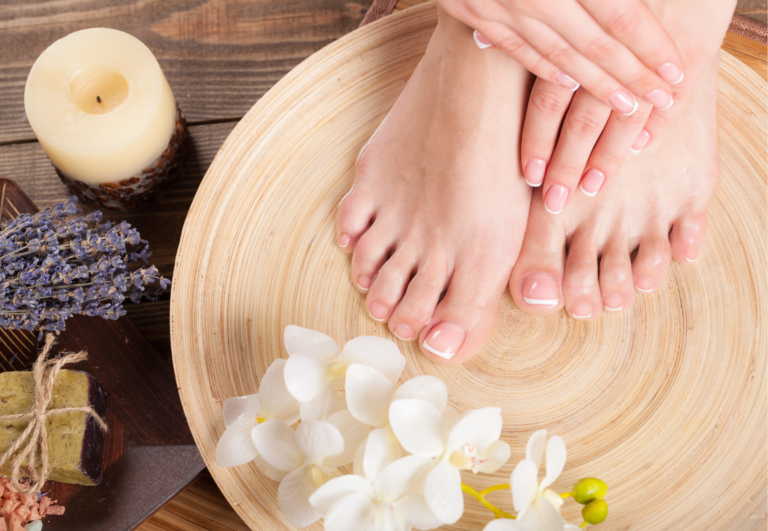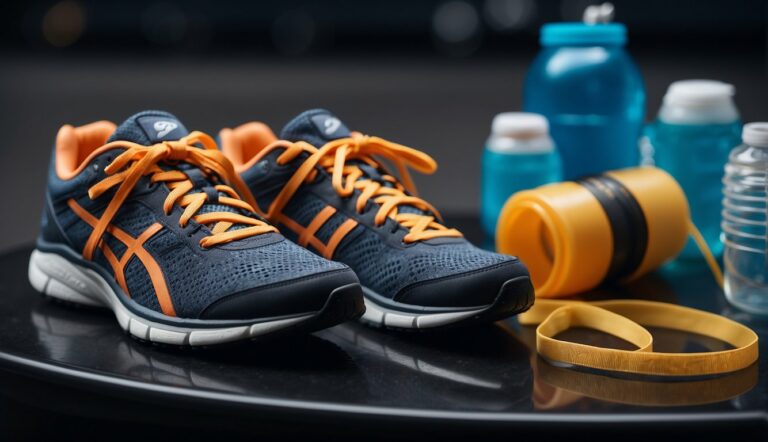How to Use Toe Spacers: A Step-by-Step Guide for Foot Health
Toe spacers are effective tools that I’ve found invaluable for enhancing foot comfort and addressing some common foot discomforts. Wearing these simple devices can help alleviate foot pain by promoting a more natural toe alignment, often disrupted by narrow or ill-fitting shoes.
When I use toe spacers, they gently separate my toes, which can improve circulation, stretch out foot muscles and tendons, and contribute to a better balance overall. It’s a less known foot health practice that I’ve discovered to be particularly helpful for people who are on their feet all day or who experience toe crowding.
Incorporating toe spacers into a daily routine may seem daunting at first, but it’s fairly straightforward. I recommend starting with short periods of wear and gradually increasing as your feet adjust. This can potentially lead to more noticeable comfort and relief from ongoing foot pain.
How to Use Toe Spacers: A Step-by-Step Guide
Using toe spacers can be a beneficial addition to your foot care routine.
Here’s a step-by-step guide on how to use them effectively:
- Choose the Right Size: Make sure to select toe spacers that fit your foot size. They should feel comfortable and not too tight between your toes.
- Start with Clean Feet: Wash your feet to ensure they’re clean before using the toe spacers. This helps prevent any potential skin irritation.
- Insert the Toe Spacers: Sit down and gently insert the toe spacers between each of your toes. Start from the space between your big toe and second toe and work your way to the little toe. The spacers should fit snugly but not cause pain.
- Begin with Short Sessions: Initially, wear the toe spacers for short periods of time, about 10-15 minutes. This allows your feet to get used to the sensation and the new toe alignment.
- Gradually Increase Duration: As your toes adjust, gradually increase the time you wear the toe spacers. You can wear them while resting, walking around the house, or during certain activities as recommended.
- Perform Foot Exercises: While wearing the toe spacers, you can perform foot exercises to enhance the benefits. Exercises may include toe curls, toe splay, and heel raises.
- Monitor Your Feet: Pay attention to how your feet feel during and after using the toe spacers. If you experience any pain or discomfort, reduce the wearing time or consult with a healthcare professional.
- Clean the Toe Spacers: After each use, clean the toe spacers according to the manufacturer’s instructions to maintain hygiene.
- Consistent Use: For best results, use the toe spacers consistently as part of your daily routine.
- Combine with Proper Footwear: Complement the use of toe spacers with shoes that have a wide toe box, allowing your toes to remain in a natural position throughout the day.
Remember, while toe spacers can be beneficial for many people, those with certain foot conditions or pain should seek advice from a podiatrist or foot specialist before starting to use toe spacers.
Toe Spacer Overview
Toe spacers are designed to promote proper toe alignment and foot health. As someone who uses these tools regularly, I’ve come to appreciate their effectiveness in providing comfort and supporting overall foot structure.

Types of Toe Spacers
Toe spacers come primarily in two forms: silicone and gel. Silicone spacers are durable and easy to clean, while gel spacers are often softer and provide more cushioning. Both types are designed to fit snugly between the toes, each offering a slightly different feel and level of support.
Benefits of Toe Spacers
The key benefits of using toe spacers include:
- Alleviating pain: By straightening and separating the toes, they reduce discomfort from overlapping toes and bunions.
- Improving balance and posture: Consistent use can retrain the feet to support the body’s weight more effectively.
- Evenly distributing pressure: This helps to avoid undue stress on any one part of the foot.
Design and Materials
Toe spacers are crafted using soft materials that conform to the contours between the toes. Silicone and gel are the most common materials due to their flexibility and hypoallergenic properties. Their design varies from full-sizers that cover all toes to individual spacers for targeted relief. The materials and design choices contribute to the spacer’s functionality and comfort level.
How to Choose the Right Toe Spacers
When it comes to selecting toe spacers, the right fit, material, and consideration of specific foot conditions are paramount for effectiveness and comfort.
Sizing and Fit
It’s vital to select toe spacers that correspond accurately to the size of your feet to avoid additional discomfort. For the big toe, spacers should provide enough separation without forcing the toe into an unnatural position. In contrast, spacers for the little toe necessitate a smaller size for a snug, yet comfortable fit.
- Bunions: A larger size can help accommodate the extra space needed.
- Hammertoes: Look for adjustable spacers to cater to the curvature of the toes.
Material Considerations
The material of the toe spacers plays an important role in their efficacy and comfort. Most high-quality spacers are made of silicone, which is durable and hypoallergenic. Medical-grade silicone is a top choice due to its safety and flexibility. This material adjusts to the contours of your feet, offering a personalized fit.
- Softness: Pick silicone that balances softness with support.
- Hygiene: Ensure the spacers are easy to clean to maintain foot health.
Specific Foot Conditions
Understanding the specific issues your feet might be facing will guide your decision in choosing the appropriate toe spacers.
- Bunions: Select spacers that alleviate pressure on the joint.
- Hammertoes: Spacers with a more rigid design can help in realigning the toes.
- Proper footwear: Always pair toe spacers with shoes that have enough room to house them comfortably without compressing the toes.
By considering these factors, you can make an informed choice that contributes to the health and alignment of your toes.
Best Practices for Using Toe Spacers
Toe spacers can enhance foot health by aligning toes and may alleviate discomfort from bunions. Integrating their use into daily activities and exercise routines is crucial for achieving the best results.
Daily Activities
When incorporating toe spacers into daily life, start with short intervals to allow your feet to adjust. I recommend wearing them at home during relaxed states, like while reading or working at a desk. It’s essential to monitor your feet’s reaction to the spacers; they should never cause pain.
- During walking: Short walks around the house with toe spacers can be beneficial. Increase the duration gradually.
- While running: Seek a professional’s advice before running with toe spacers, as it’s for more advanced users.
Exercise and Stretching Routines
Incorporating toe spacers into exercise and stretching routines can contribute significantly to foot strength and alignment. Some specific exercises that work well with toe spacers include:
- Yoga: With yoga toes or correct toes, engage in poses that promote balance and foot strength.
- Stretching: Gently stretching your toes with the spacers in place can increase flexibility.
For active use during exercises, ensure that the toe spacers are secure but comfortable and that your foot movements are not restricted.
Exercising with toe spacers should be done cautiously; they aren’t suitable for every type of workout. Be attentive to what your body tells you throughout each session.
Advanced Use of Toe Spacers
Toe spacers can be strategically implemented for advanced applications, notably enhancing athletic performance and managing certain medical conditions. By understanding how to correctly utilize these devices in more complex scenarios, individuals can optimize their foot health and reap greater benefits.
Athletic Performance
I’ve observed that athletes using toe spacers see marked improvements in the alignment of their toes, which in turn supports better posture and more efficient movement during sports activities. The separation of toes allows for:
- Increased ankle range of motion: Essential for dynamic activities requiring sharp turns and sprints.
- Enhanced foot muscle strength: Vital for agility and reducing the risk of foot injuries.
To effectively integrate toe spacers into athletic endeavors:
- Begin by incorporating toe spacers during warm-ups to acclimate the foot muscles.
- Progress to using them during training sessions to allow the feet to adapt to the spacers during movement.
- Evaluate the performance improvements, particularly in terms of balance and lower limb joint stability.
Dosage:
- Use for 10-15 minutes during the initial sessions.
- Gradually increase the duration as comfort with the spacers grows.
Medical Conditions
Toe spacers also play a supportive role for individuals living with foot-related medical conditions such as:
- Arthritis: Helps to maintain toe alignment and ease joint pain.
- Diabetes: Improves circulation by preventing the toes from clumping together.
- Rheumatoid Arthritis: Assists in reducing deformities by keeping toes straight.
To employ toe spacers for these conditions:
- Carefully place the toe spacers between each toe, ensuring they fit snugly but do not cause pain.
- Use under the supervision of a healthcare provider to ensure proper application and to address any discomfort that arises.
Scheduling:
- Start with short intervals of use, 5-10 minutes several times a day.
- Depending on individual tolerance and need, duration can be carefully increased.
For those who are unsure of how to incorporate toe spacers into their routine or to address specific concerns, consulting with a podiatrist is advisable. They can provide personalized guidance based on your unique foot structure and health needs.
Maintenance and Care
Maintaining toe spacers is crucial for hygiene and longevity. I usually recommend a simple cleaning routine to keep them in good condition.
-
- Rinse toe spacers in warm water to remove any foot residue.
- Use a mild soap to ensure they are thoroughly sanitized.
- Avoid harsh chemicals that might degrade the material.
Drying:
- Pat them dry with a clean towel or let them air dry completely before storing them.
- Never store toe spacers while they are still damp, as this can promote bacterial growth.
Storage:
- Keep your toe spacers in a breathable container or pouch.
- Ensure they are stored in a cool, dry place away from direct sunlight, which can cause some materials to deteriorate.
-
- Check your toe spacers for signs of wear and tear, such as stretching or small rips.
- Replace them if they show any damage to ensure they continue to provide the right support.
This easy-to-follow care routine ensures that your toe spacers remain easy to clean, durable, and safe for ongoing use. Remember, well-cared-for toe spacers mean healthier and more comfortable feet for you.





